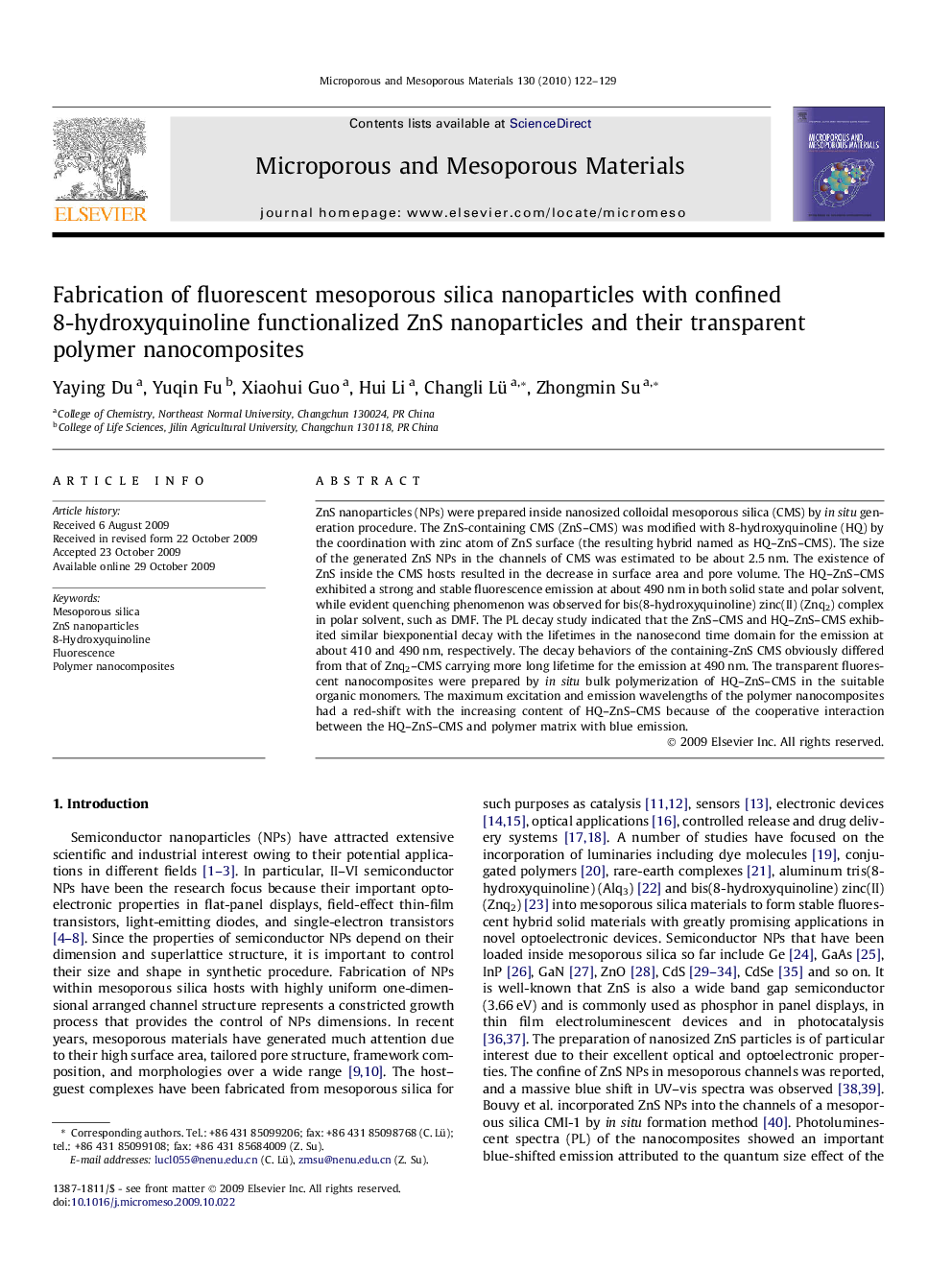| Article ID | Journal | Published Year | Pages | File Type |
|---|---|---|---|---|
| 75467 | Microporous and Mesoporous Materials | 2010 | 8 Pages |
ZnS nanoparticles (NPs) were prepared inside nanosized colloidal mesoporous silica (CMS) by in situ generation procedure. The ZnS-containing CMS (ZnS–CMS) was modified with 8-hydroxyquinoline (HQ) by the coordination with zinc atom of ZnS surface (the resulting hybrid named as HQ–ZnS–CMS). The size of the generated ZnS NPs in the channels of CMS was estimated to be about 2.5 nm. The existence of ZnS inside the CMS hosts resulted in the decrease in surface area and pore volume. The HQ–ZnS–CMS exhibited a strong and stable fluorescence emission at about 490 nm in both solid state and polar solvent, while evident quenching phenomenon was observed for bis(8-hydroxyquinoline) zinc(II) (Znq2) complex in polar solvent, such as DMF. The PL decay study indicated that the ZnS–CMS and HQ–ZnS–CMS exhibited similar biexponential decay with the lifetimes in the nanosecond time domain for the emission at about 410 and 490 nm, respectively. The decay behaviors of the containing-ZnS CMS obviously differed from that of Znq2–CMS carrying more long lifetime for the emission at 490 nm. The transparent fluorescent nanocomposites were prepared by in situ bulk polymerization of HQ–ZnS–CMS in the suitable organic monomers. The maximum excitation and emission wavelengths of the polymer nanocomposites had a red-shift with the increasing content of HQ–ZnS–CMS because of the cooperative interaction between the HQ–ZnS–CMS and polymer matrix with blue emission.
